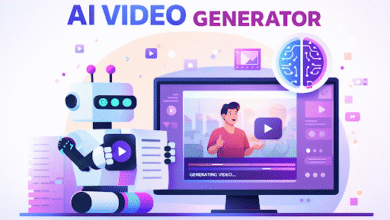Face Swapping Changed How I Create Content

Content creation is exhausting. There, I said it. Between coming up with fresh ideas, filming everything multiple times, and trying to keep up with whatever algorithm changes happened this week, I was burning out fast.
Then I discovered face swapping, and honestly, it felt like cheating at first. But after six months of using it regularly, I can’t imagine going back to the old way of doing things.
The Problem Nobody Talks About
Everyone acts like content creation is this glamorous thing, but the reality is brutal. You need constant variety, but you’re working with the same budget, the same small team, and the same limited time.
I was spending entire weekends filming different versions of the same concept just to have enough content for the week. It was unsustainable, and the quality was suffering because I was rushing everything.
How Face Swapping Actually Works (Without the Tech Jargon)
I’m not going to pretend I understand all the technical stuff, but basically, modern video face swap tools can take someone’s face and put it on another person’s body in a video. And when I say “put it on,” I don’t mean the weird, floating-head nonsense you see in memes.
Good face swapping looks completely natural. The lighting matches, the expressions sync up, and unless someone tells you it’s been swapped, you’d never know.
Where This Actually Makes Sense
I’m not talking about using this for pranks or weird stuff. Here’s where face swapping has genuinely helped my content:
Client testimonials: I had this great testimonial video, but the client wanted versions for different demographics. Instead of asking the original person to reshoot everything, I could adapt it for different audiences.
Educational content: When I’m explaining concepts, sometimes I need to show different scenarios or examples. Face swapping lets me create these without hiring multiple people or doing complex shoots.
Social media variations: One good video can become five different versions for different platforms, each tailored to that audience.
The Learning Curve Isn’t That Bad
I thought this would be super complicated, but it’s really not. The hardest part is getting good source material. You need decent lighting and clear shots of faces. If you start with garbage footage, you’ll get garbage results.
The actual swapping part? Most tools handle that automatically now. You upload your videos, select the faces you want to swap, and wait for it to process. That’s it.
What Nobody Tells You
Here’s the stuff I wish someone had mentioned when I started:
It’s not magic: Bad lighting will still look bad. Blurry footage will still be blurry. Face swapping can’t fix fundamental problems with your source material.
Straight-on faces work best: Profile shots and weird angles are much harder to swap convincingly. Plan your shoots accordingly.
Processing takes time: Depending on the length and complexity, you might wait anywhere from a few minutes to an hour for results.
The Ethics Question
Yeah, we need to talk about this. Face swapping can be misused, and that’s a real concern. I only use it for content where I have permission from everyone involved, and I’m always transparent about when I’ve used the technology.
The goal isn’t to trick anyone – it’s to create better content more efficiently. There’s a big difference between those two things.
Where I See This Going
The technology keeps getting better and faster. What used to take professional video editors hours to accomplish now happens in minutes. And the quality has reached a point where it’s genuinely hard to tell the difference.
But here’s what excites me most: it’s becoming accessible to regular creators like me. You don’t need a Hollywood budget or a team of editors anymore.
My Honest Take
Face swapping isn’t going to solve all your content problems, but it can definitely help with some of them. It’s particularly useful if you’re creating educational content, testimonials, or anything where you need multiple variations of the same concept.
The key is treating it like any other tool in your toolkit. It’s not a replacement for good planning, decent equipment, or creative thinking. But when used strategically, it can save you time and money while improving your content quality.
If you’re curious about trying this out, I’d recommend starting simple. Don’t try to create some elaborate production on your first attempt. Get comfortable with the basics first.For beginners, I’d actually suggest starting with AI gif face swap tools. Gifs are more forgiving than full videos, and you can learn the basics without dealing with all the complexities of longer-form content. Plus, they’re perfect for social media engagement.




